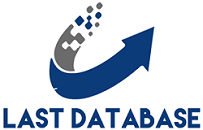Delivering the right content to the right audience helps Belgium Phone Number List prospective customers move through the sales funnel and can potentially increase conversion rates. Getting more clicks on your content also extends your organic reach and helps boost brand awareness. If you’re ready to enjoy the benefits of a higher CTR, here are nine strategies you can leverage within your campaigns. 1. Target and segment your audience To maintain a good CTR, you need to know your audience and what they want to see. Start by defining your audience. What demographic categories do they fall into? What are their needs, interests, and behavior patterns? Don’t be afraid to get specific. For example, if you run a clothing brand, you’ll want to identify the age, gender identity, and interests of your standard customer. You’ll also need to identify the types of marketing campaigns they’ll be most responsive to. Some groups might respond best to a specific type of social media content, while others might be more likely to click on a standard digital ad campaign. You’ll also need to take time to understand your audience’s pain points and what’s on their mind when they interact with your content. These pain points can change based on current trends. Conducting market research is often the most efficient way to learn about your target audience. You can do this through online polls, surveys, and focus groups. Once you identify your audience, the next step is to segment them. Segmentation involves breaking your target audience into subgroups. For example, you might have segments for specific locations, online behavior patterns, or demographic groups. You can then create different digital marketing campaigns for each segment. Segmenting your marketing campaigns allows you to personalize them and create a stronger connection with the audience, which could improve your CTR. 2. Conduct keyword research Keyword research helps you understand what terms people are searching for. You can then include these keywords in your marketing strategies to increase your visibility, which can improve your CTRs. There are a variety of free and paid tools, including Semrush, Moz, and Google Keyword Planner, that you can use to identify high-quality keywords. For example,

If you’re conducting a pay-per-click ad campaign with Google ads, you’ll need to identify target keywords. Your ads will show up in the SERP when someone searches for these keywords. You can also use keywords in social media marketing campaigns to increase your chances of appearing in search results. There are many different types of keywords to consider when planning your marketing campaigns. Look at both short-tail and long-tail keywords; short-tail keywords are more general, while long-tail keywords are more specific. Almost 92% of search queries are long-tail keywords. If you’re targeting customers in a specific geographic area, you can also focus on location-specific keywords. You can also choose keywords based on search intent. When customers want to learn, they’ll use informational keywords, such as “how to shorten long links.” However, when they want to buy, they’ll use commercial keywords, such as “best link shortener.” Decide which keywords make the most sense based on where your campaign fits in the sales funnel. To target customers who are further along in the sales funnel, you can even use branded keywords, which include the name of your company or product. 3. Optimize title tags and meta descriptions Your title tags and meta descriptions are what users see when your website pops up in search engine results. The title tag is the title of your website, while the meta description is the short two-line snippet underneath it. This information tells searchers what to expect when they click on the results. Optimizing your title tags and meta descriptions to be more engaging and relevant can help generate more interest and improve CTRs. It’s also important to have a URL that’s relevant to your site. Your title tags and meta descriptions should be clear and concise. Users should know exactly what to expect from your page just by looking at this information. If it’s too vague, they’ll likely choose a different site instead. Additionally, make sure to add your target keyword to your title tag and meta description. This is important for SEO and can improve your SERP position, which is vital to maintaining good CTRs


